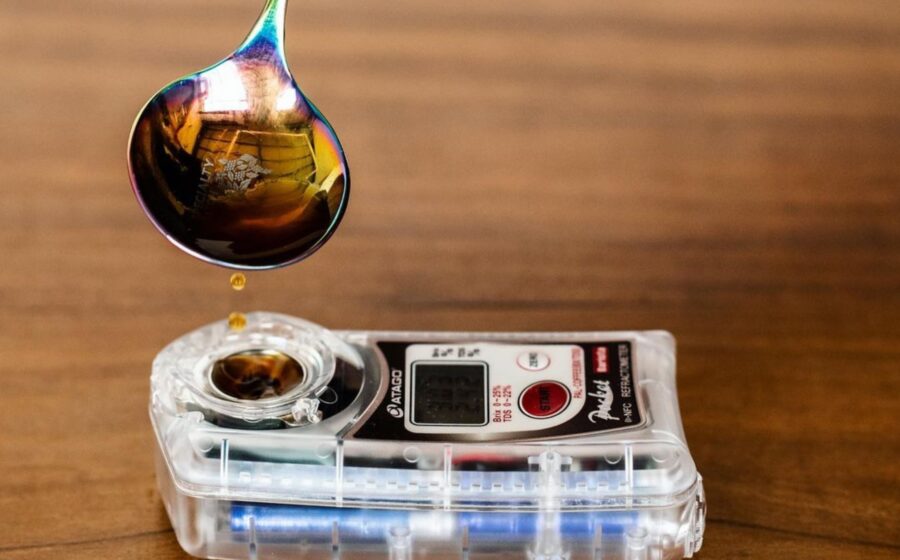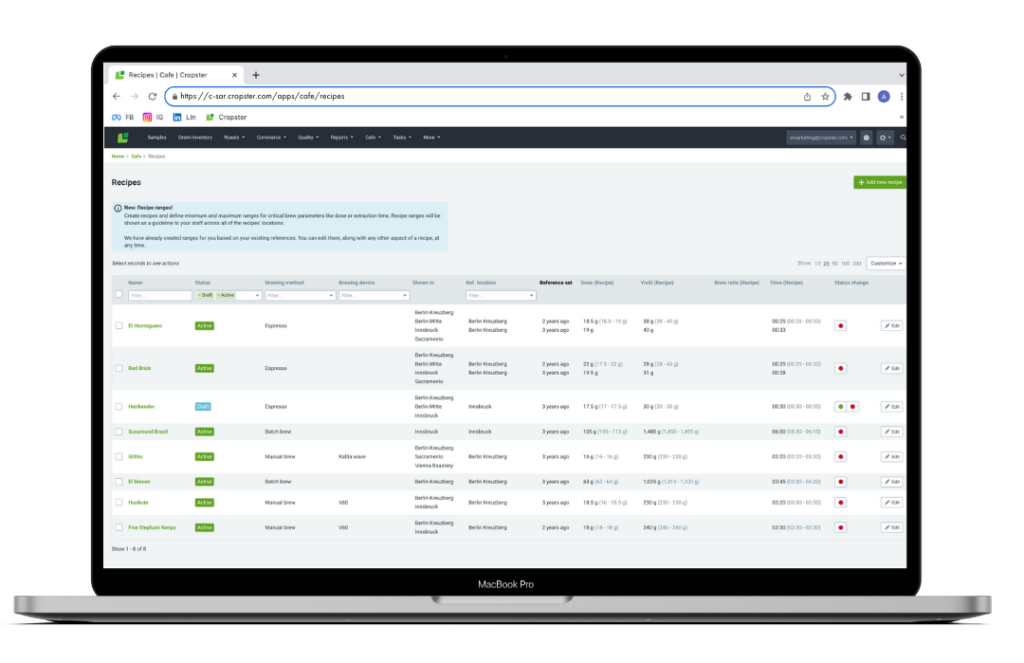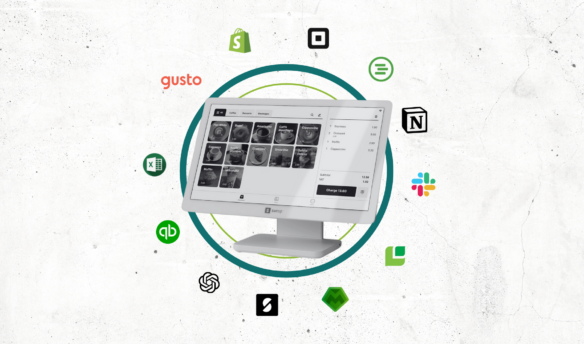This article is sponsored by our partner, Cropster.
Over the past decade, the specialty coffee industry has evolved in response to shifting consumer preferences and behaviors. As consumers increasingly embrace high-quality craft coffee and seek greater convenience, technology has assumed a more prominent role in cafes and behind the bar than ever before.
Within this ever-changing landscape, cafe managers have had to assume a lot more responsibility, from overseeing everything from coffee quality to directing operations, all while keeping up with evolving customer preferences. This task is quite daunting, but luckily, cafe managers have access to more tools than ever, ranging from software solutions to automated brewing equipment, all to help streamline task management and ensure coffee quality across locations.
With so many different tools available to managers, it can be tricky to sift through the noise to find the best ones for you. To offer some clarity, we talked to three cafe operators who told us their favorite work tools to effectively manage teams, optimize operations, and deliver a consistent customer experience.
Digital Tools Fueling Operational Excellence
Many cafe owners and managers use various software and apps to streamline daily tasks and fill operational gaps, including (but not limited to) employee scheduling, payment processing, accounting, and inventory management.
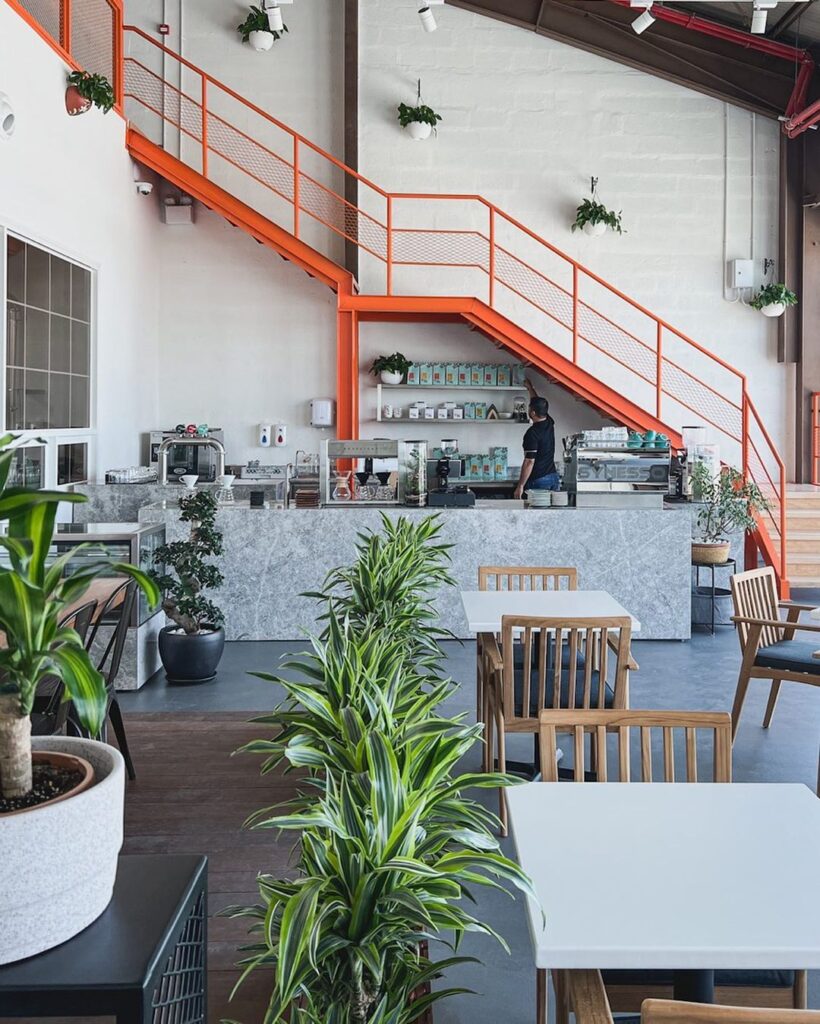
“As artificial intelligence continues to advance, we’re seeing waves of new apps and programs hit the market daily,” says Ryan Godinho, head roaster and owner of Specialty Batch Coffee Roasters and Stomping Grounds Café in Dubai. “Tech can be a real game-changer…[and] a certain level of automation can genuinely enhance a cafe’s operations.”
He emphasizes that cafe operators should only incorporate digital tools in their workflows if they solve a specific operational challenge rather than adopting them on a whim—the tools you’ll need depend on the scale of your operations. For example, a small mom-and-pop cafe might not need to spend hundreds each month on an extensive inventory management system, but a large chain absolutely should.
However, most cafes will invest in an integrated point-of-sale (POS) system. Most POS systems serve many different purposes, including payment processing, online ordering, tracking and forecasting sales, and payment processing—all of which can help streamline the ordering process and improve future decision-making.
RaonJena Coffee & Dessert in Glastonbury, Connecticut, was founded by husband and wife duo Do Kim and Hanna Park and fueled by their passion for specialty coffee and baking. Kim, who also serves as head barista, says their shop uses the Square POS app. “Many features from Square, including sales, customers, and employees, are very convenient for small businesses.”
“We use Zettle by PayPal for our POS and sales reporting, which ties neatly with Xero accounting software,” says Rapolas Rimeika, founder of Dark Habit, a coffee shop in London offering single-origin specialty coffees and fine wines. “With these two [software platforms], I can have very accurate, up-to-date sales data. Seeing the data has helped make major decisions like not having seating in the cafe anymore and making savings while increasing sales,” says Rimeika.

Godinho says that other POS and digital inventory management systems, such as Revel, can also be useful tools because they provide order processing and sales tracking with ingredient-level inventory insights. So, whenever a customer buys a drink, its ingredients are automatically subtracted from the current inventory quantity. “Real-time inventory data with your ordering system aids in better forecasting and can be a huge time-saver,” he says.
Effective task management, like ensuring staff completes regular cleaning and maintenance tasks consistently and thoroughly, is another massive responsibility for managers. Traditional pen and paper to-do lists are often inefficient and prone to oversights, and many cafe managers turn to task management apps to streamline this process. Rimeika says his team uses Google Sheets for daily to-do lists and Google Calendar for recurring health and safety tasks.
Cropster Cafe, for example, offers a suite of tools that allows managers to set, monitor, and track tasks while enabling staff to check off tasks in the app as they complete them, even across multiple locations. “The task management system is savvy,” says Godinho. “It helps us juggle various preventative maintenance tasks with ease and efficiency.”
Holy Grails for Managing Quality and Consistency
At a time when coffee programs span multiple cafe locations and diverse teams, achieving consistency and quality in every drink can be tough. Luckily, it’s not impossible, thanks to specialized software designed to address these problems.
Godinho says, “At Stomping Grounds, we utilize Cropster Cafe’s Recipe Management feature daily to ensure that each cup of coffee served is up to our exacting standards.” Cropster allows cafe managers to create and share brew recipes with their team, so “with staff shift changes, everyone can access best-practice recipes across equipment in real-time, reducing dial-in time and waste considerably.”
Managers can pull production and consistency reports to see a snapshot of cafe and equipment efficiency at any given time. “These reports offer insights into peak production times—the efficiency of our workflow, and most importantly, the consistency of our brews,” says Godinho. “It’s data that helps us optimize staffing, training, diagnose process flaws, and plan inventory.”
Cropster Cafe eliminates the need for checklists or post-it reminders cluttering the bar, allowing managers to make real-time updates to brewing recipes that their entire team will see immediately. Godinho says quality and consistency are cornerstones of their cafe and roastery, and data-rich tools like Cropster are instrumental in achieving this. “Not only does it give us insight into potential quality deviations during operation, but with real-time data, remotely accessible, it helps us identify potentially dire inconsistencies that need to be promptly addressed,” he says.
This simplified approach helps keep everyone on the same page about how and what things need to be done. Operators can then focus on other tasks that need their attention rather than closely monitoring the bar workflow. “The integrated nature of all these programs takes a lot of the guesswork out of our cafe and roastery operations,” says Godinho. “Whether it’s getting insights into our coffee’s storage environment, streamlining our inventory, fine-tuning production roasting processes, replicating favorite profiles, or managing the consistent quality output of our cafe, Cropster ensures everything runs smoothly.”
Cafe Equipment Essentials
A quick Google search for ‘the best coffee shop equipment’ will generate lists upon lists of tools and equipment that coffee pros claim will make your cafe run smoothly. This information overload can make it hard to pinpoint what equipment will realistically help improve cafe operations and efficiency. So, instead, we asked these cafe operators for their tried-and-true coffee tool recommendations.
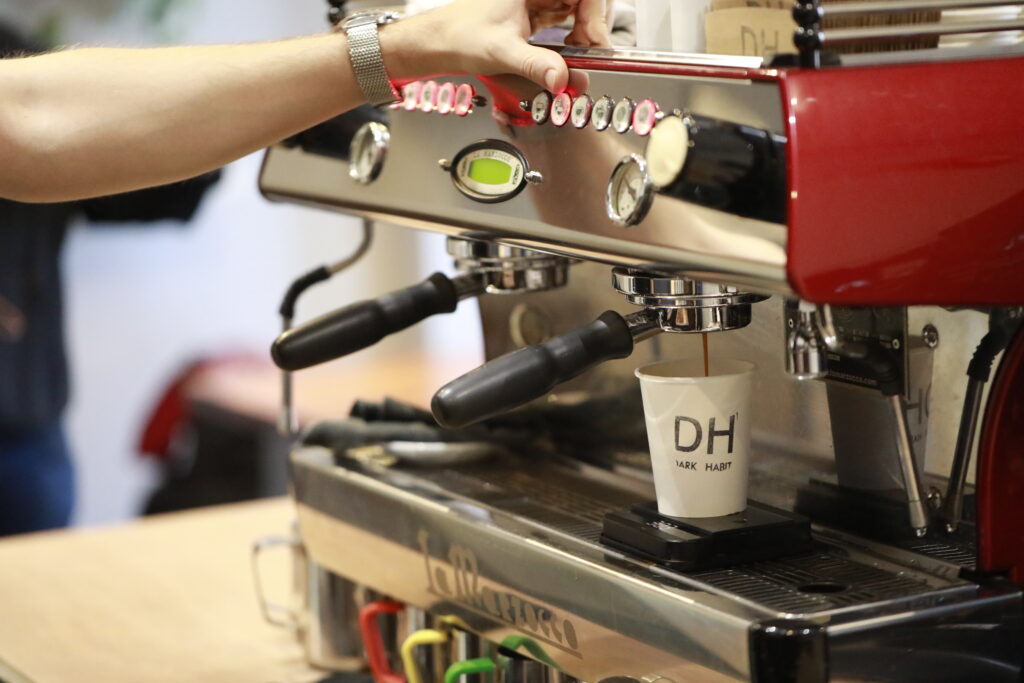
Starting with coffee grinders, Rimeika recommends investing in a reliable, high-quality grinder like the Mahlkönig EK43 Allround Grinder or the Simonelli Mythos One so that your grind is consistent across brews. Godinho also suggests using “advanced on-demand espresso grinders, such as Grindie’s SOLO, with built-in portafilter recognition, a built-in scale, and de-clumping technology.” He says these features help accurately grind the required dose with precision, streamlining the espresso dosing process like never before. Additionally, he recommends looking into “automated tamping solutions (such as PUQpress or Cube), [which] can not only assist bar staff in speed and efficiency of service, but it also can reduce worker strain.”
However, the results were across the board regarding these operators’ favorite coffee brewers and espresso machines. While Dark Habit and RaonJena use La Marzocco espresso machines, Stomping Grounds Café uses a Synesso machine. With so many excellent espresso machine options available, the key is finding the one that works for your cafe’s volume, features, and budget.
Cafe operators can also look into automated brewing systems to streamline time-consuming drink-making. “Automated pour-over systems, such as Poursteady brewers, can mimic the handcrafted pour-over process but with greater consistency and less manual labor,” says Godinho. “A bit of artisan flair with a tech twist that allows the staff to spend their time better.”
Kim emphasizes that one of the most challenging things in any industry, especially specialty coffee, is consistency in quality. Even a slight variation in the brewing process can make a huge difference. “These days, there are so many great machines, grinders, and coffee in the specialty coffee industry, but we need data to run it uniformly and produce good coffee,” says Kim. He recommends finding tools that help you maintain consistency—one of his favorites is a coffee refractometer, which measures extraction and caffeine concentration levels to ensure you’re brewing a consistent cup.
Building Your Own Cafe Management Toolkit
Whether you’re running a small coffee or a bustling coffee hub, all cafe managers depend on a versatile toolkit of digital and physical resources to keep their operations in check. But beware, while some coffee tools might be the latest buzz or neat-looking, be sure to pick the tools that work best for your specific operational needs. Godinho suggests starting by evaluating your cafe’s particular needs and bottlenecks. “Is it inventory management that’s slowing you down, or perhaps inconsistent coffee quality? Once you’ve got that nailed down, it’s easier to find targeted solutions.”
Rimeika shares this sentiment: “Don’t overcomplicate it; implement things that the team will actually use. You need to be able to rely on your tools 100% so that you can focus on the customer and the coffee,” he adds. Rimeika encourages operators to first build a solid team foundation by focusing on sensory training and goal alignment instead of throwing just another tool into the mix.
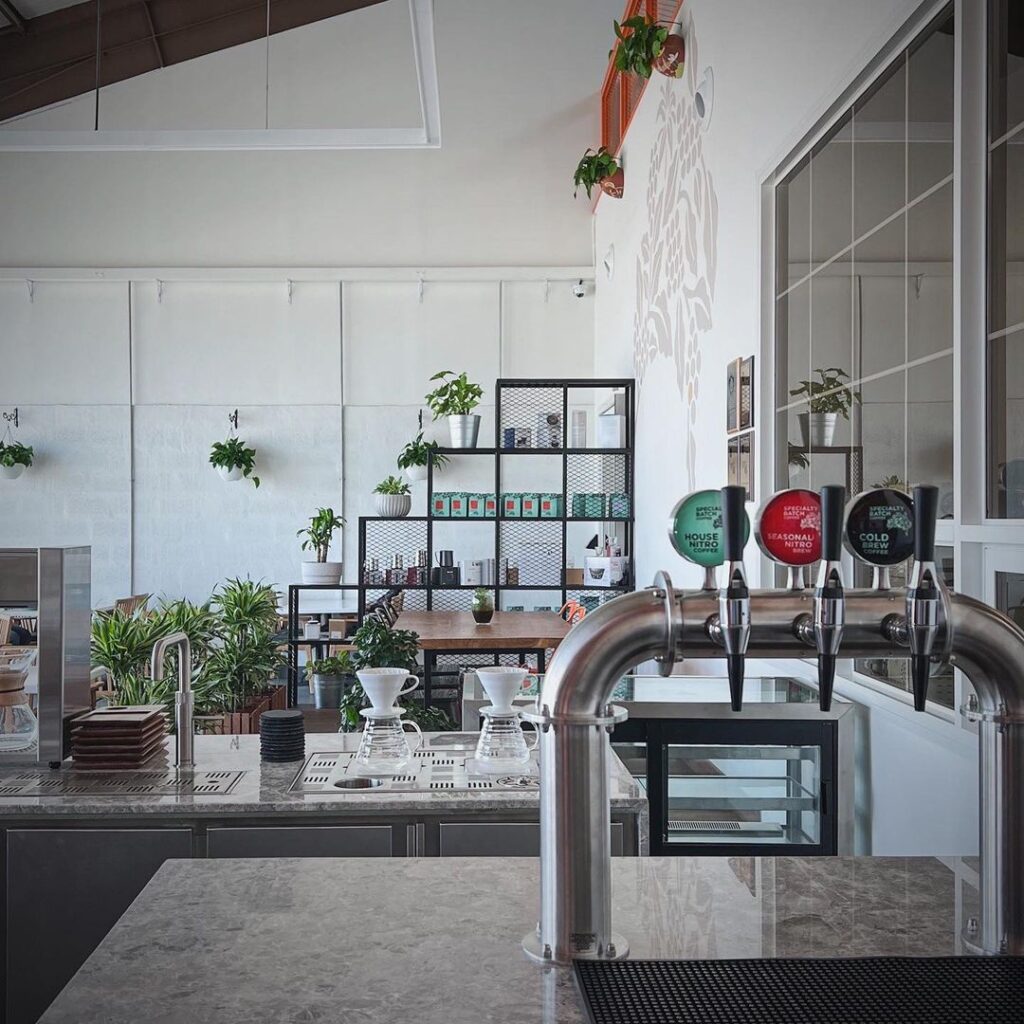
It’s also helpful to consider the amount of tools you’re using and how well they communicate with each other. Too many tools can make it harder for your team to keep track of and use effectively. Godinho says to do your homework: “Look for platforms that not only integrate well and communicate with each other to streamline tasks like POS transactions, customer loyalty programs, and staff scheduling but also have excellent support via their customer service programs.” And once you’ve found a solution that works for you, he urges managers not to set it and forget it—you should regularly review if you’re getting the most out of your tools.
Crafting a customized toolkit that guarantees consistency, efficiency, and quality is the secret to managing a successful cafe that your customers enjoy returning to every time. Once you’ve found your set of reliable tools, you can confidently embrace the daunting task of fostering productivity, maintaining efficient operations, and ensuring unwavering consistency and quality. Ultimately, these tools are the backbone of creating a truly superior customer experience that meets (and hopefully exceeds) the expectations of the coffee enthusiasts you serve.



